Lines and details in my work record the flow of thought.
New York, United States
@mosaz_zj | @mosazarttt
INTERVIEW
Your work often intertwines traditional cultural symbols with personal narratives. How do you navigate the balance between honoring cultural heritage and expressing individual experiences in your art?
In my artworks, traditional culture is a living memory that can be reinterpreted and reconstructed by individuals. I interweave traditional symbols and imagery with personal experiences and emotions to create a visual language that is both rooted in cultural memory and imbued with a strong individual spiritual dimension. For me, respecting tradition is not about simply reproducing it, but about revitalizing it within contemporary contexts through ongoing dialogue, collision, and reshaping. This balance is a fluid process, and every creation becomes a new act of interpretation and fusion.
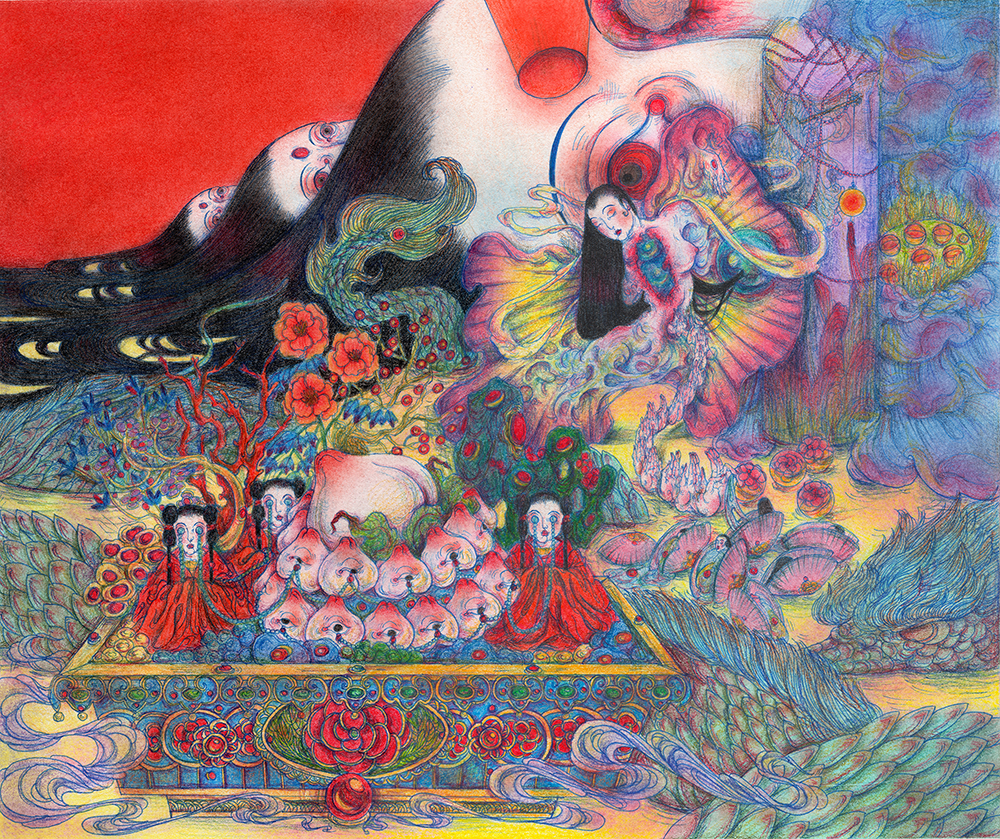
In pieces like “A Joyful Funeral,” you explore themes of life, death, and transformation. Can you elaborate on how you conceptualize and represent these profound themes through your visual language?
The visual narrative moves from the bot-tom right to the top left: beginning with a small figure in mourning, seen only beside a tree stump, and rising to the large Tree of Life represented by three divine heads. Behind the tree lies the ocean, symbolizing the birth of new life. The narrative continues with the de-ceased’s tears and their transformation into a moth—a symbol in Chinese culture of the dead returning to visit loved ones. However, this moth is eventually eaten by a bird.
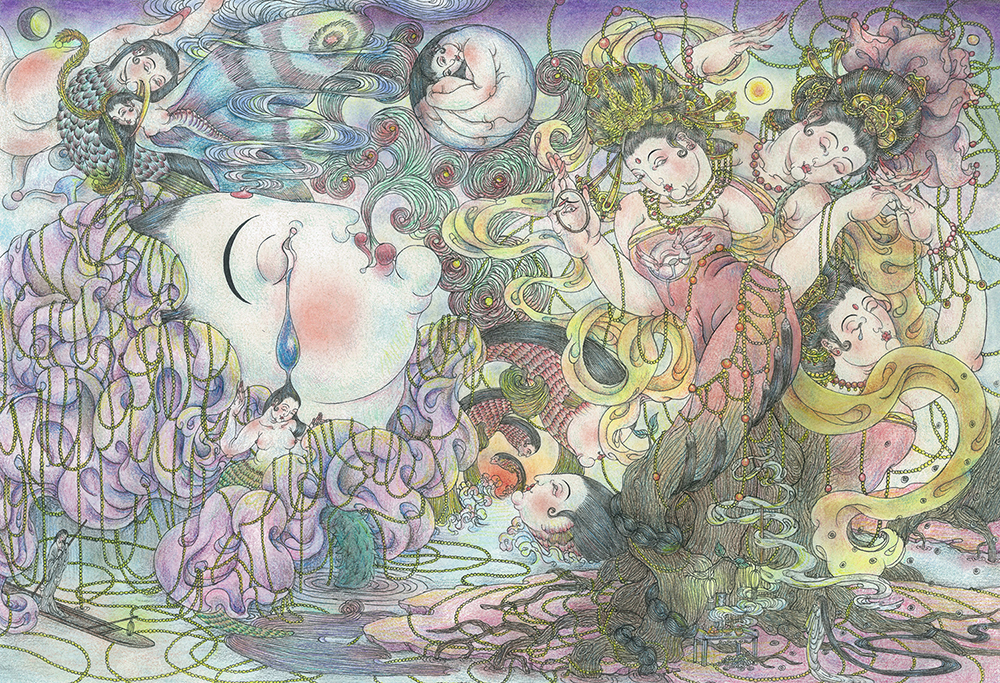
You’ve curated and juried exhibitions such as “Dream” at Pale Space Gallery. How does curating others’ work inform or contrast with your own artistic practice?
Curating other people’s works has revealed to me the diversity of artistic languages and the vastly different narrative approaches artists take when addressing the same theme. As a curator, I must adopt an overall perspective, understanding and respecting the independent context of each work. This experience, in turn, deepens my understanding of my own creative process. It makes me more conscious in my artistic practice, allowing me to maintain the integrity of my individual narrative while continually examining the dialogue between my work, the viewer, and the broader cultural context.
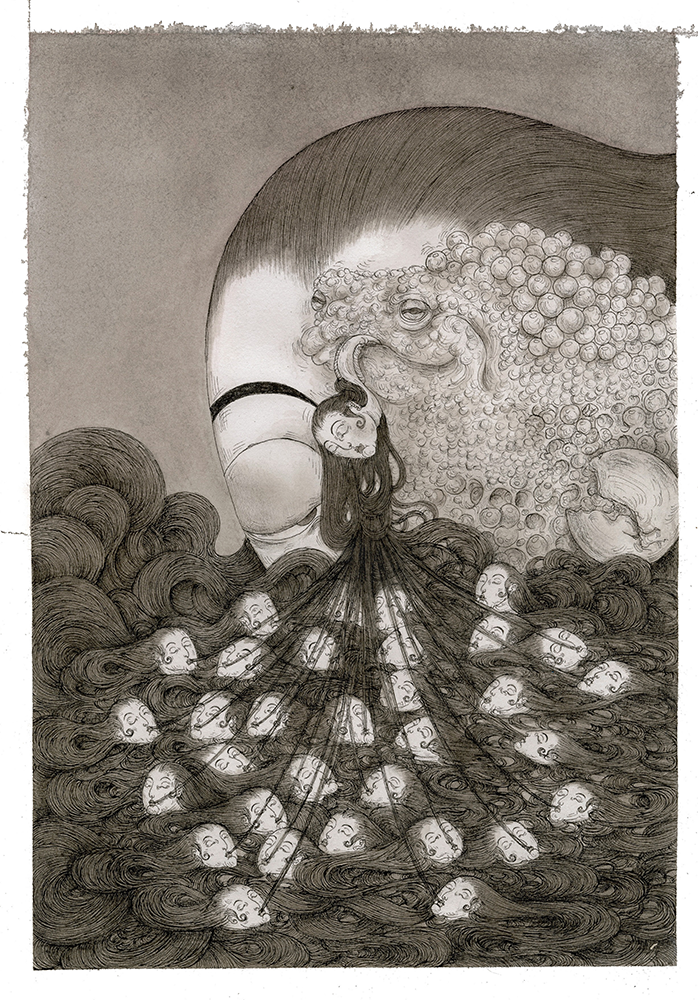
Your art has been showcased internationally, from Madrid to Milan. How have different cultural contexts and audiences influenced your work or its reception?
Exhibiting across different cultural contexts has allowed me to experience firsthand the diverse interpretations my work can evoke. At the International Prize Leonardo da Vinci, held at the National Museum of Science and Technology “Leonardo da Vinci” in Milan, Italy, audiences often interpreted the themes of life and death through the lens of religious and traditional cultural narratives. In contrast, at the Reproduction of Light Asian Art Exhibition at the Fukuoka Asian Art Museum in Japan and at the CICA Museum in Gyeonggi-do, South Korea, viewers responded more sensitively to the intricacy of details and the emotional undercurrents within the compositions.
This cross-cultural feedback has profoundly influenced my artistic approach, deepening my understanding of the openness and fluidity of visual language. It has also prompted me to continuously reflect on how to maintain both the independence of my artistic voice and the communicability of my work across different cultural frameworks. Each international experience has expanded the dialogue between my personal narratives and broader cultural discourses, enriching both the content and the structure of my practice.
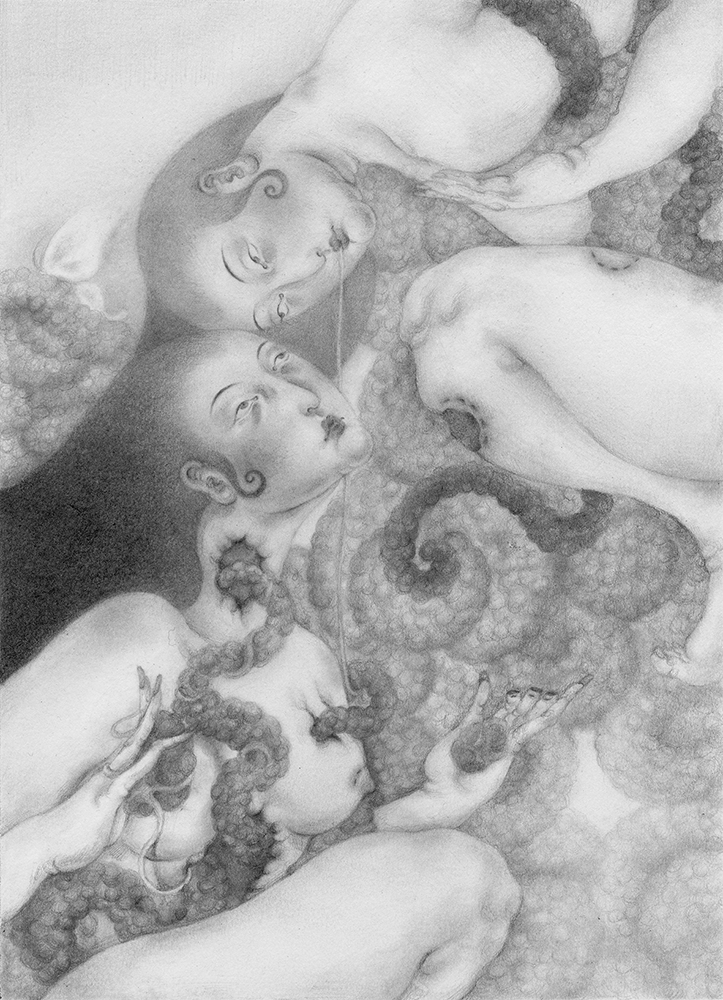
Could you share insights into your recent project “Platinum Worm LLC”? What inspired its inception, and what are its core objectives?
Platinum Worm LLC is an art platform that takes on various forms. The establishment of this project stems from my reflection on the multiple roles artists play in contemporary society — as creators, narrators, planners, and connectors. The “Platinum Worm” in its name symbolizes a continuously evolving spiritual state, while the platform also serves as a space for other artists to share resources and engage in dialogue.
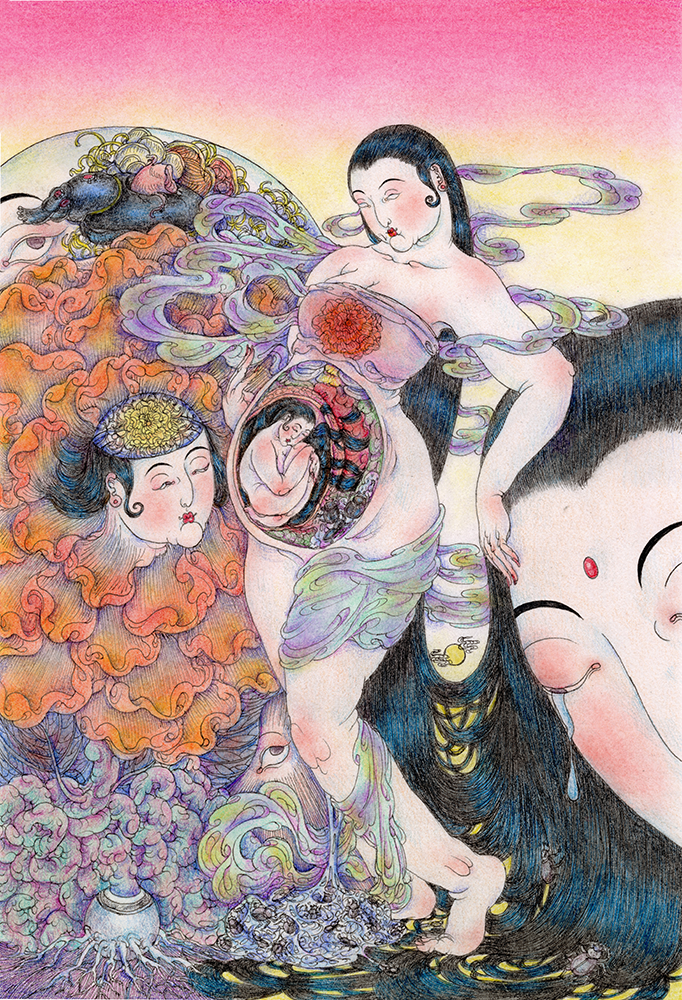
Looking ahead, what themes or mediums are you interested in exploring in your future projects?
In the future, I hope to further explore the theme of the “continuity of death” and plan to incorporate more experimental creative methods that combine artificial intelligence generation with hand-drawn lines.
At the same time, I remain interested in printmaking as a more material-based medium, seeking to explore transformation through the use of physical materials. Additionally, I aim to further develop my curatorial practice into a more open and cross-disciplinary collaborative project system.